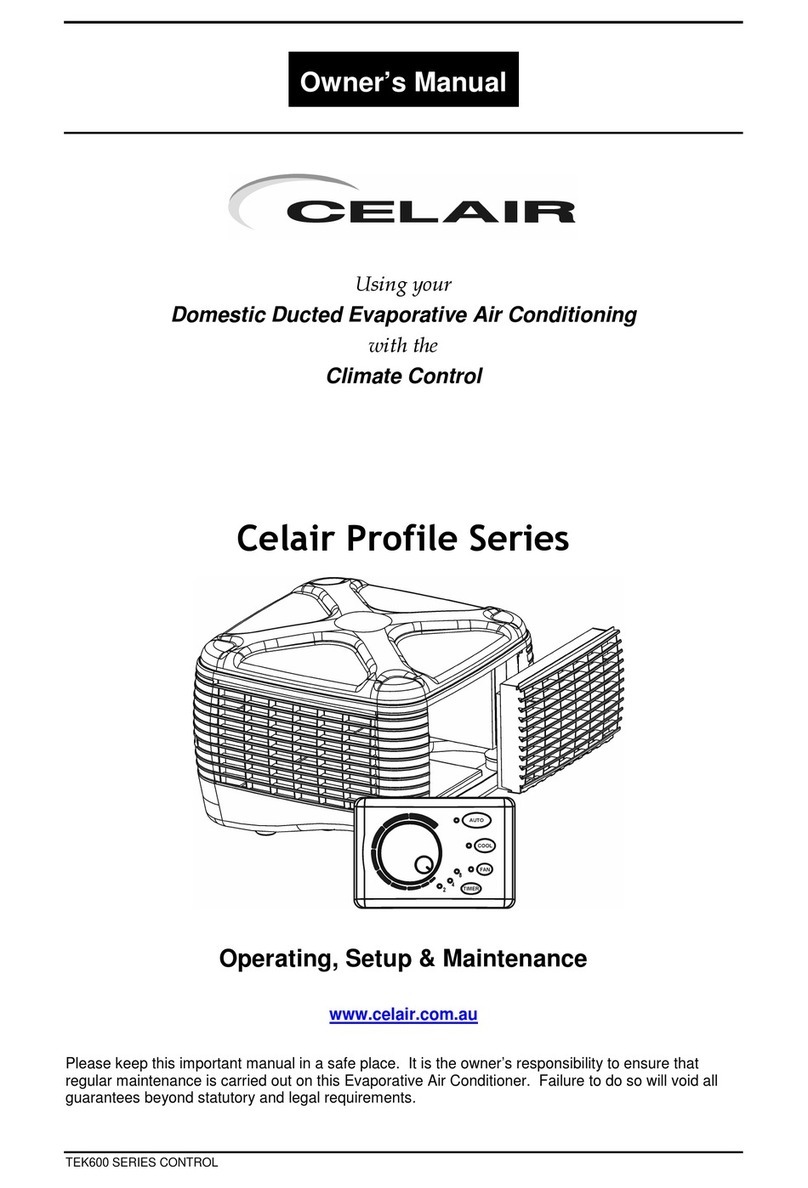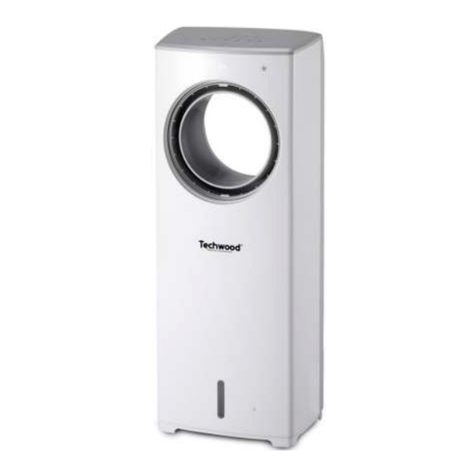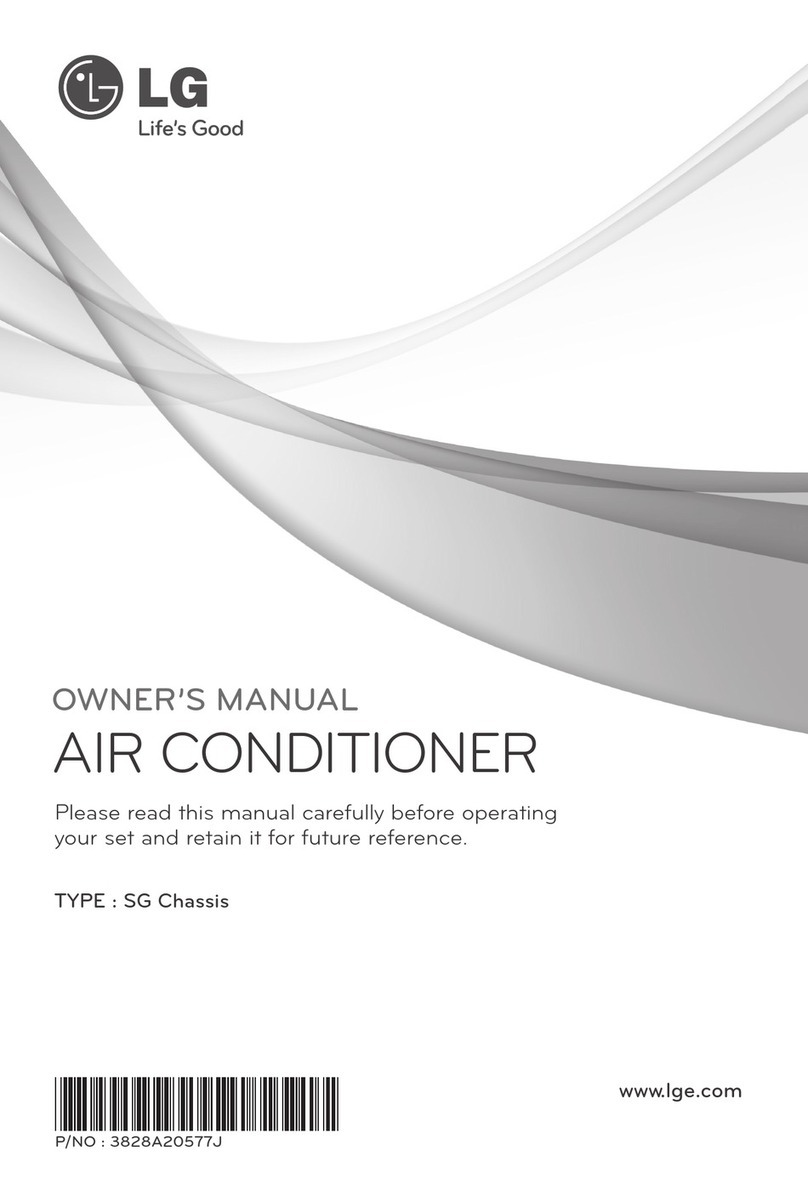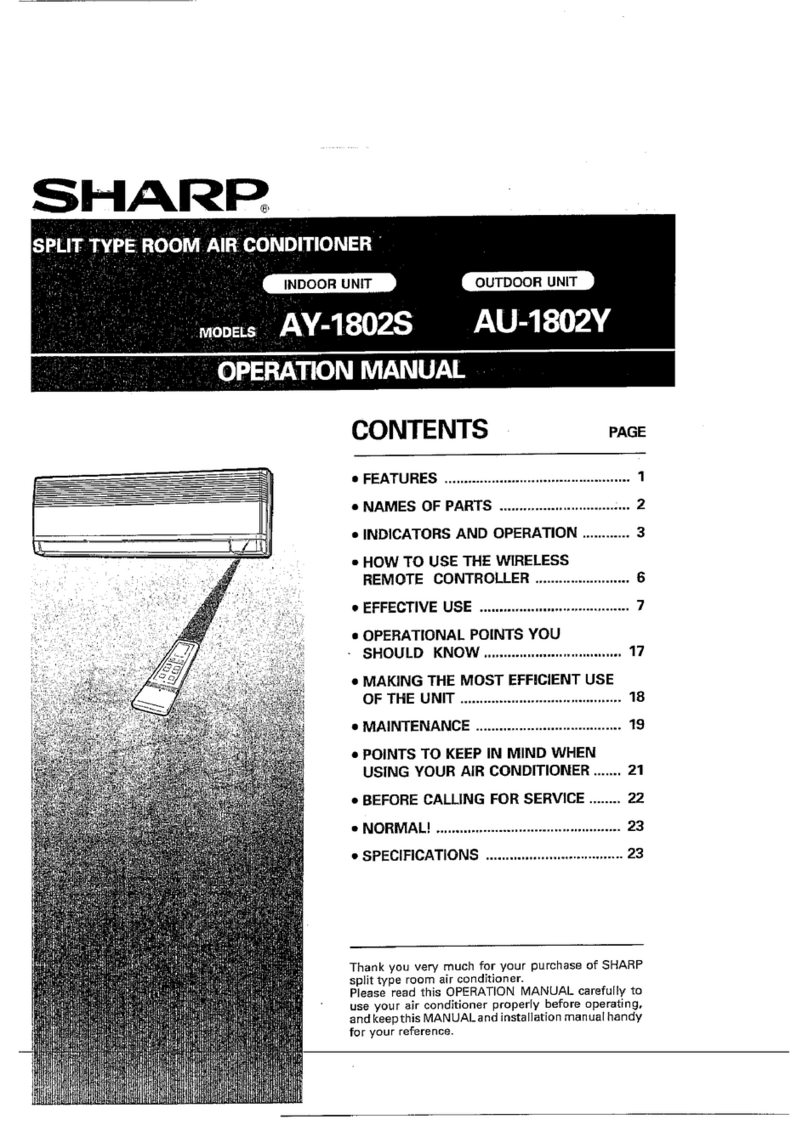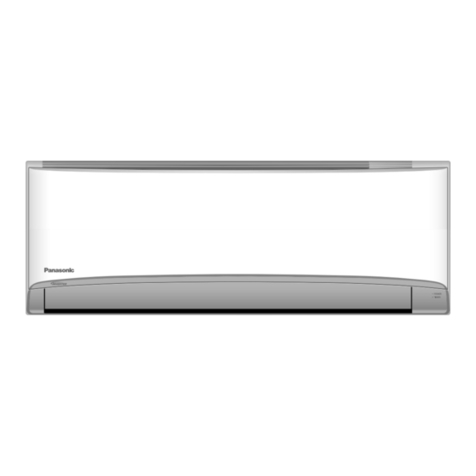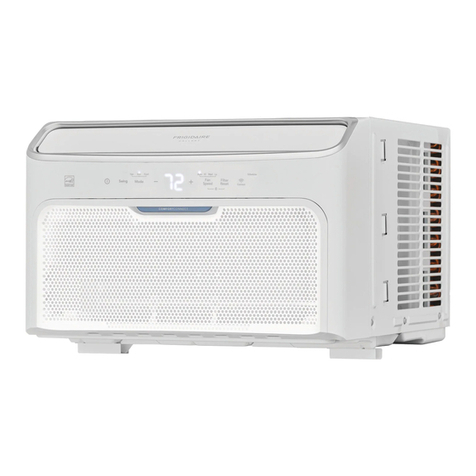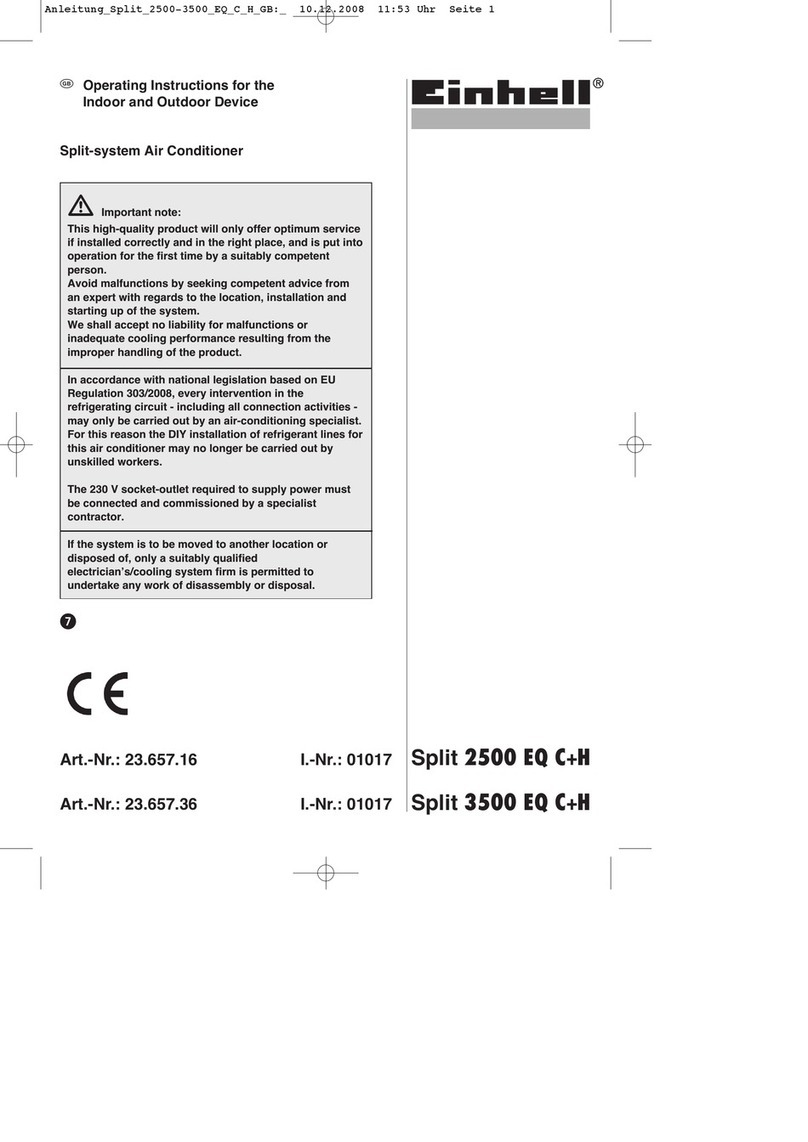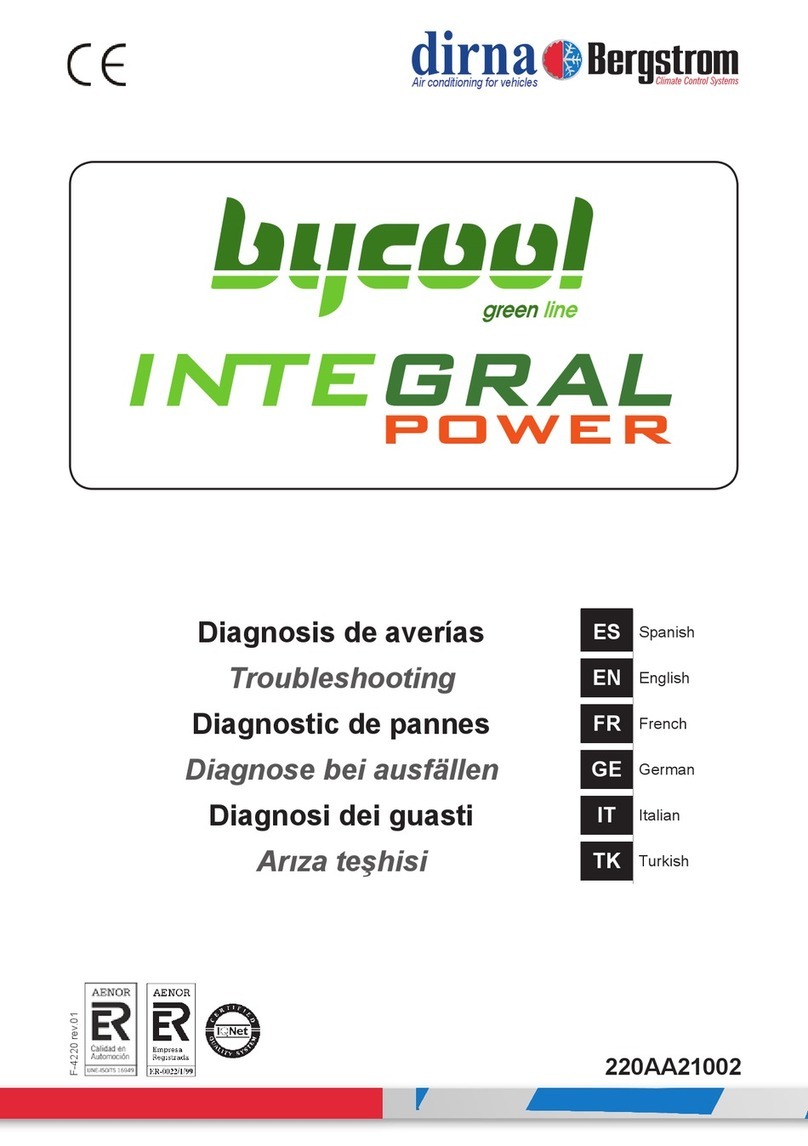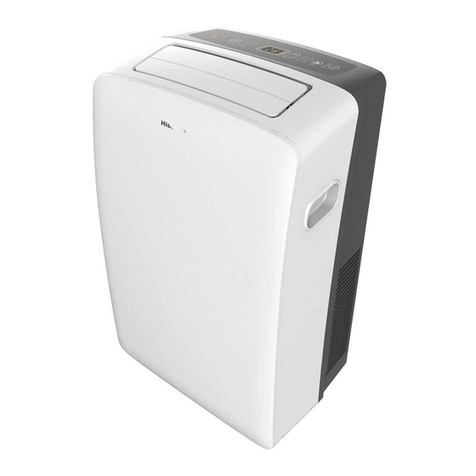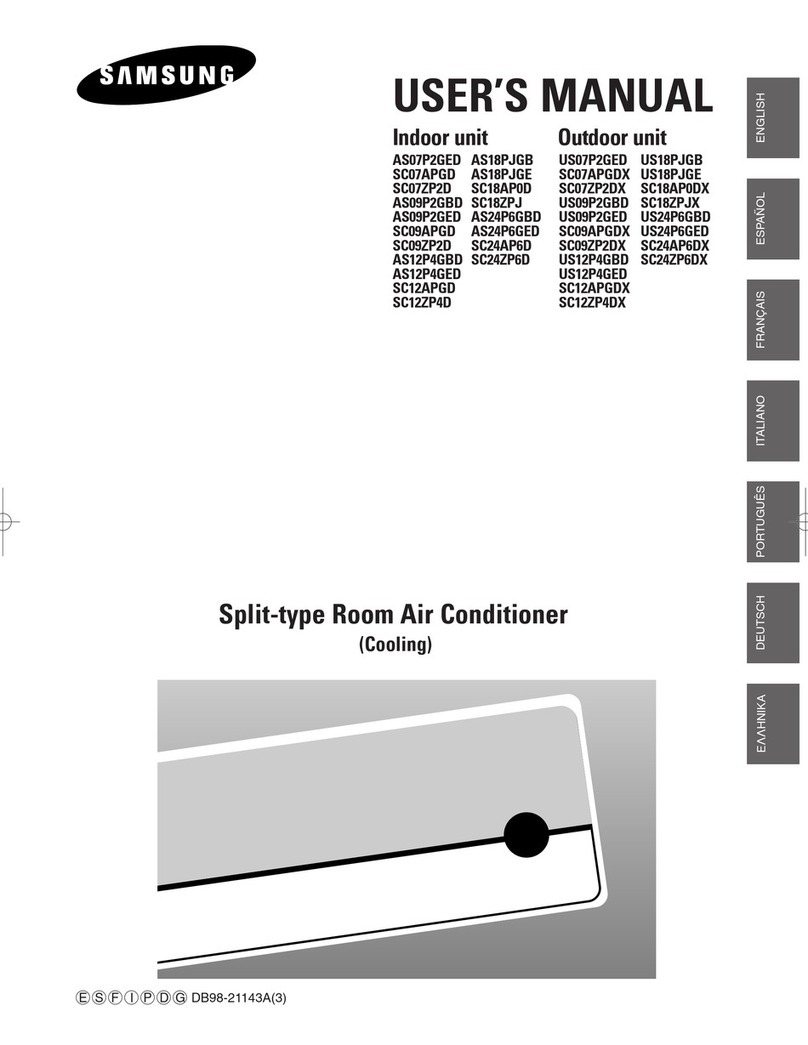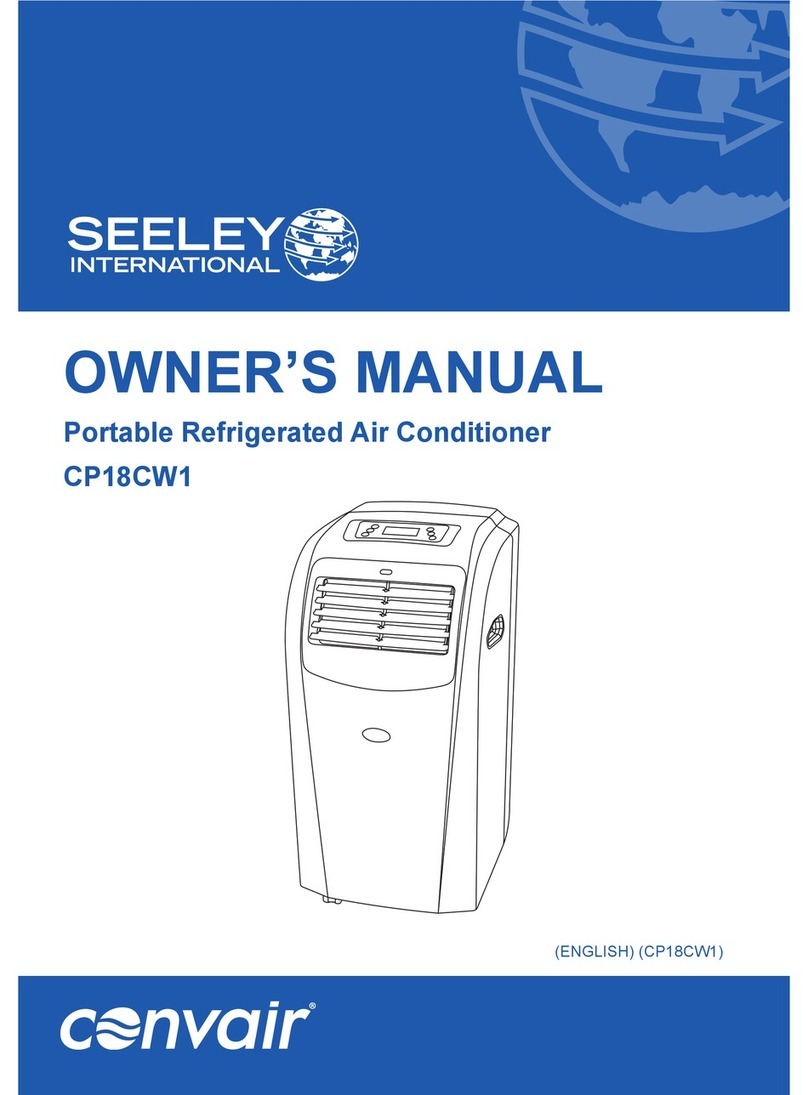Blyss A018I-09C User manual

EN Local Air
Conditioner
(9K, 12K BTU
Heating &/or
Cooling)
FR Climatiseur local
(9000, 12000 BTU
chaud et/ou froid)
ES Aire acondicionado
portátil (9K, 12K
BTU, calefacción y
refrigeración)
PT Aparelho de ar
condicionado locais
(9K, 12K BTU
Aquecimento
e/ou arrefecimento)
A018I-09C
5063022060242
5063022060310
A018I-09CH
5063022060235
A018I-12C
5063022060297
A018I-12CH
5063022060303
5063022060211
V11222_5063022060242_MAND1_2223
EN IMPORTANT - These instructions are for your safety. Please read
through them thoroughly prior to handling the product and retain
them for future reference.
FR IMPORTANT : Ces instructions sont données pour votre sécurité.
Merci de les lire attentivement avant de manipuler le produit et de
les conserver pour référence.
ES IMPORTANTE: Estas instrucciones son para su propia seguridad.
Léalas atentamente antes de manipular el producto y guárdelas
para futuras consultas.
PT IMPORTANTE - Estas instruções são para sua segurança.
Leia-as atentamente antes de manusear o produto e guarde-as
para consultas futuras.
Page Size: A5
EAN: 5063022060242
Impala Ref: PRJ26556
KNG: KNG-1726-0005
20/10/22
Faaiz 05 /11/ 22
Mohit 29/11/22
Mohit 12/12/22
Mohit XX/XX/22
NAME
1 2 3 4 5
5063022060242_MNL_IN_V04.indd 15063022060242_MNL_IN_V04.indd 1 12-12-2022 16:08:0512-12-2022 16:08:05

2
EN Parts
FR Pièces
ES Piezas
PT Peças
EN You will need
FR Vous aurez besoin de
ES Necesitará
PT Vai precisar de
x1
02. x1 03. x1 04. x1
05. x1 06. x1 07. x2
08. x1 09. x2 10. x101. x1
EN Contents
FR Table des matières
ES SContenido
PT Conteúdo
EN FR ES PT
Safety 3Sécurité 16 Seguridad 30 Segurança 43
Guarantee 15 Garantie 29 Garantía 43 Garantia 56
Installation 58 Installation 60 Instalación 62 Instalação 64
Product description 66 Description du
produit 66 Descripción del producto 66 Descrição do produto 66
Functions & settings 67 Fonctions et
réglages 69 Funciones y
conguración 72 Funções e
congurações 75
Care & maintenance 77 Entretien et
maintenance 78 Cuidados y
mantenimiento 79 Cuidados e manutenção 79
5063022060242_MNL_IN_V04.indd 25063022060242_MNL_IN_V04.indd 2 12-12-2022 16:08:0512-12-2022 16:08:05

3
EN Safety
FR Sécurité
ES Seguridad
PT Segurança
EN
Before you start
Please read the following
instructions carefully before
using the local air conditioner
and retain for further reference.
CAUTION - FIRE,
ELECTRIC SHOCK,
PHYSICAL INJURY
AND PROPERTY
DAMAGE HAZARDS.
• To use the local air
conditioner, always follow the
instructions for assembly use
and maintenance as well as
usage cautions.
• Do not wet the housing or
control panel.
• Do not cover the air outlet
while in use.
• Do not allow children to play
with the control or drop any
objects into the air outlet.
• Do not place any objects or
let any person sit on top of the
unit.
• Always turn the unit off and
remove the power plug from
the socket when cleaning or
for any other maintenance
operation.
• Do not attempt to remove any
part of the casing unless by
an authorised technician.
• Remove the plug from the
socket if the unit is not being
used for a long period.
• Always connect this appliance
to a 220-240 V~ mains power
socket.
• Do not operate the unit with
damaged plug or loose socket
point.
• Do not use means to
accelerate the defrosting
process or to clean, other than
those recommended by the
manufacturer.
• The appliance shall be stored
in a room without continuously
operating ignition sources
(forexample:openames,
an operating gas appliance or
an operating electric heater).
• Do not pierce or burn.
Be aware that refrigerants
may not contain an odour.
• Appliance shall be installed,
operated and stored in a
roomwithaoorarealarger
than 12m² for A018I-09C
and A018I-09CH, stored in a
roomwithaoorarealarger
than 15m² for A018I-12C and
A018I-12CH.
5063022060242_MNL_IN_V04.indd 35063022060242_MNL_IN_V04.indd 3 12-12-2022 16:08:0512-12-2022 16:08:05

4
WARNING: KEEP
VENTILATION
OPENING CLEAR OF
OBSTRUCTION.
• Servicing shall be performed
only as recommended by the
manufacturer.
WARNING: THE
APPLIANCE SHALL
BE STORED IN A
WELL-VENTILATED
AREA WHERE THE
ROOM SIZE
CORRESPONDS TO
THE ROOM AREA AS
SPECIFIED FOR
OPERATION.
WARNING: THE
APPLIANCE SHALL
BE STORED IN A
ROOM WITHOUT
CONTINUOUSLY
OPERATING OPEN
FLAMES (FOR
EXAMPLE AN
OPERATING GAS
APPLIANCE) AND
IGNITION SOURCES
(FOR EXAMPLE AN
OPERATING
ELECTRIC HEATER).
• Under no circumstances shall
potential sources of ignition be
used in the searching for or
detection of refrigerant leaks.
A halide torch (or any other
detectorusinganakedame)
shall not be used.
• For leak detection, the use of
detergents containing chlorine
shall be avoided.
• If a leak is suspected,
allnakedamesshallbe
removed/extinguished.
• Call the service agent
immediately and keep far
away from the product.
• If disposal or decommissioning
is needed, please contact the
service agent or authorized
personal to do it. Do not
dispose and decommission
the product yourself.
• The appliance shall be
installed in accordance with
national wiring regulations.
• The maximum refrigerant
charge amount for
A018I-09C: 212g.
• The maximum refrigerant
charge amount for
A018I-09CH: 212g.
• The maximum refrigerant
charge amount for
A018I-12C: 226g.
• The maximum refrigerant
charge amount for
A018I-12CH: 226g.
5063022060242_MNL_IN_V04.indd 45063022060242_MNL_IN_V04.indd 4 12-12-2022 16:08:0512-12-2022 16:08:05

5
• An unventilated area where
theapplianceusingammable
refrigerants is installed shall
be so constructed that should
any refrigerant leak, it will not
stagnatesoastocreateare
or explosion hazard.
• The appliance shall be stored
so as to prevent mechanical
damage from occurring.
• Check that cabling will not be
subject to wear, corrosion,
excessive pressure, vibration,
sharp edges or any other
adverse environmental
effects. The check shall
also take into account the
effects of aging or continual
vibration from sources such
as compressors or fans.
• The following leak detection
methods are deemed
acceptable for systems
containingammable
refrigerants.
• Electronic leak detectors shall
beusedtodetectammable
refrigerants, but the sensitivity
may not be adequate, or may
need re-calibration. (Detection
equipment shall be calibrated
in a refrigerant-free area.)
Ensure that the detector is
not a potential source of
ignition and is suitable for the
refrigerant used.
• Leak detection equipment
shall be set at a percentage
of the LFL of the refrigerant
and shall be calibrated to the
refrigerant employed and the
appropriate percentage of gas
(25%maximum)isconrmed.
• Leakdetectionuidsare
suitable for use with most
refrigerants but the use of
detergents containing chlorine
shall be avoided as the
chlorine may react with the
refrigerant and corrode the
copper pipe-work.
• If a leak is suspected, all
nakedamesshallbe
removed/extinguished.
• If a leakage of refrigerant is
found which requires brazing,
all of the refrigerant shall be
recovered from the system, or
isolated (by means of shut off
valves) in a part of the system
remote from the leak.
• Oxygen free nitrogen (OFN)
shall then be purged through
the system both before and
during the brazing process.
• Before carrying out this
procedure, it is essential
that the technician is
completely familiar with the
equipment and all its detail.
It is recommended good
practice that all refrigerants
are recovered safely. Prior
5063022060242_MNL_IN_V04.indd 55063022060242_MNL_IN_V04.indd 5 12-12-2022 16:08:0512-12-2022 16:08:05

6
to the task being carried out,
an oil and refrigerant sample
shall be taken in case analysis
is required prior to re-use of
reclaimed refrigerant. It is
essential that electrical power
is available before the task is
commenced.
• Become familiar with the
equipment and its operation.
• Isolate system electrically.
• Before attempting the
procedure ensure that:
– mechanical handling
equipment is available,
if required, for handling
refrigerant cylinders.
– all personal protective
equipment is available and
being used correctly.
– the recovery process is
supervised at all times by a
competent person.
– recovery equipment and
cylinders conform to the
appropriate standards.
• Pump down refrigerant
system, if possible.
• If a vacuum is not possible,
make a manifold so that
refrigerant can be removed
from various parts of the
system.
• Make sure that cylinder is
situated on the scales before
recovery takes place.
• Start the recovery machine
and operate in accordance
with manufacturer’s
instructions.
• Donotoverllcylinders.
(No more than 80% volume
liquid charge).
• Do not exceed the maximum
working pressure of the
cylinder, even temporarily.
• When the cylinders have
beenlledcorrectlyandthe
process completed, make
sure that the cylinders and
the equipment are removed
from site promptly and
all isolation valves on the
equipment are closed off.
• Recovered refrigerant shall
not be charged into another
refrigeration system unless
it has been cleaned and
checked.
• Equipment shall be labelled
stating that it has been
decommissioned and emptied
of refrigerant. The label shall
be dated and signed.
• Ensure that there are labels
on the equipment stating
the equipment contains
ammablerefrigerant.When
removing refrigerant from a
system, either for servicing
or decommissioning, it is
recommended good practice
5063022060242_MNL_IN_V04.indd 65063022060242_MNL_IN_V04.indd 6 12-12-2022 16:08:0512-12-2022 16:08:05

7
that all refrigerants are
removed safely.
• When transferring refrigerant
into cylinders, ensure that
only appropriate refrigerant
recovery cylinders are
employed. Ensure that the
correct number of cylinders
for holding the total system
charge are available. All
cylinders to be used are
designated for the recovered
refrigerant and labelled for
that refrigerant (i.e. special
cylinders for the recovery of
refrigerant). Cylinders shall be
complete with pressure relief
valve and associated shut-off
valves in good working order.
Empty recovery cylinders are
evacuated and, if possible,
cooled before recovery occurs.
• The recovery equipment shall
be in good working order
with a set of instructions
concerning the equipment
that is at hand and shall be
suitable for the recovery of
ammablerefrigerants.In
addition, a set of calibrated
weighing scales shall be
available and in good
working order. Hoses shall
be complete with leakfree
disconnect couplings and
in good condition. Before
using the recovery machine,
check that it is in satisfactory
working order, has been
properly maintained and that
any associated electrical
components are sealed to
prevent ignition in the event of
a refrigerant release. Consult
manufacturer if in doubt.
• The recovered refrigerant
shall be returned to the
refrigerant supplier in the
correct recovery cylinder, and
the relevant Waste Transfer
Note arranged. Do not mix
refrigerants in recovery units
and especially not in cylinders.
• If compressors or compressor
oils are to be removed,
ensure that they have been
evacuated to an acceptable
level to make certain that
ammablerefrigerantdoes
not remain within the lubricant.
The evacuation process
shall be carried out prior to
returning the compressor to
the suppliers. Only electric
heating to the compressor
body shall be employed to
accelerate this process. When
oil is drained from a system,
it shall be carried out safely.
• Service shall only be
performed as recommended
by the equipment
manufacturer. Maintenance
and repair operations
5063022060242_MNL_IN_V04.indd 75063022060242_MNL_IN_V04.indd 7 12-12-2022 16:08:0512-12-2022 16:08:05

8
requiring the assistance of
other skilled personnel shall
be carried out under the
supervision of the person
competent in the use of
ammablerefrigerants.
• Any person who is involved
with working on or breaking
into a refrigerant circuit should
holdacurrentvalidcerticate
from an industry-accredited
assessment authority, which
authorises their competence
to handle refrigerants safely in
accordance with an industry
recongnised assessment
specication.
• Please note this product has
non serviceable parts. The
coolant gas in this appliance
cannot be replaced/regased.
• This appliance can be used
by children aged from 8 years
and above and persons with
reduced physical, sensory
or mental capabilities or
lack of experience and
knowledge if they have
been given supervision or
instruction concerning use of
the appliance in a safe way
and understand the hazards
involved.
• Children shall not play with
the appliance.
• Cleaning and user
maintenance shall not be made
by children without supervision.
• Make sure that the back of
the unit is at least 31 cm or
more from a wall. Do not place
the unit in front of curtains
or drapes in case they fall
against the back air intake.
• If the supply cord is damaged,
it must be replaced by the
manufacturer, its service agent
orsimilarlyqualiedpersons
in order to avoid a hazard.
• If using this appliance with an
extension lead do not exceed
the maximum rated wattage
of the extension lead.
• Do not use this appliance
in bathrooms or wet room
environments/locations.
• Appliance must not be used
in closed cupboards or
changing rooms.
• Do not cover the appliance
with clothing or any other
fabric.
• Appliance must be kept at a
suitable distance from walls,
furniture and curtains to
prevent them from overheating
due to poor ventilation.
• Appliance should not be used
when no one is at home. If you
are away for long periods of
time, turn off the power and
remove the plug from the
socket.
5063022060242_MNL_IN_V04.indd 85063022060242_MNL_IN_V04.indd 8 12-12-2022 16:08:0512-12-2022 16:08:05

9
• Theltershouldbecleanedorreplacedperiodicallytoprevent
insufcientairowcausedbyabuildupofdustparticles.Poorair
owwillcauseoverheating,reducetheperformanceoftheunit
and add more risk.
• This appliance is designed for INDOOR DOMESTIC USE ONLY.
• The appliance shall not be installed in a laundry room.
• Please note that below notice for A018I-09C, A018I-09CH,
A018I-12C and A018I-12CH: due to the power input of this
product on start up, voltage drops may occur and this can
inuenceotherequipment(e.g.dimminglights).Thereforewe
advise you to make sure that your product is only connected
to a supply with a maximum permissible system impedance
Zmax=0.367Ohm.Ifyourequirefurtherclarication,youmay
contact your local power supply authority.
IMPORTANT! THE UNIT IS DESIGNED TO
OPERATE BETWEEN 18ºC AND 35ºC. THE UNIT’S
PERFORMANCE MAY BE GREATLY REDUCED IF
ROOM TEMPERATURES EXCEED THIS
TEMPERATURE RANGE.
• Before using the unit, place the
unit UPRIGHT for at least 1 hour
before use to allow the refrigerant
to stabilize. If the unit was tilted
on its side or upsidedown during
transportation, set the unit upright
for 4 hours before use.
• Foroptimalefciency,theunitmust
be operated in an enclosed area.
Keep all doors, windows and other
outside entrances to the room
closed.
• Place the unit at least 31 cm away
from other objects (e.g. curtains or
furniture)thatmayrestrictairow
front or through the air vents of
the unit.
• Theunitmustbepositionedonaleveloor.
5063022060242_MNL_IN_V04.indd 95063022060242_MNL_IN_V04.indd 9 12-12-2022 16:08:0512-12-2022 16:08:05

10
Plug replacement
ThisapplianceissuppliedwithaBS13633pinplugttedwitha
10 Amp fuse. Should the fuse require replacement, it must be
replaced with a fuse rated at 10 Amp and approved to BS1362.
In the event the mains plug has to be removed/replaced for any
reason, please note:
IMPORTANT: THE WIRES IN THE MAINS LEAD
ARE COLOURED IN ACCORDANCE WITH THE
FOLLOWING CODE
Blue – Neutral
Brown – Live
Green/Yellow-Earth
As the colours of the wires in
the mains lead of this appliance
may not correspond with the
coloured markings identifying
the terminals in your plug, proceed as follows.
• The blue wire must be connected to the terminal marked with an
N or coloured black.
• The brown wire must be connected to the terminal marked with
an L or coloured red.
• The green/yellow wire must be connected to the earthing terminal
which is marked with an E or with the earth symbol.
WARNING NEVER CONNECT LIVE OR NEUTRAL
WIRES TO THE EARTH TERMINAL OF THE PLUG.
Note:Ifamouldedplugisttedandhastoberemovedtake
great care in disposing of the plug and severed cable. It must be
destroyed to prevent from engaging into a socket.
Green / Yellow - Earth
BROWN Live
BLUE Neutral
Cord Clamp
FUSE 10 Amps
5063022060242_MNL_IN_V04.indd 105063022060242_MNL_IN_V04.indd 10 12-12-2022 16:08:0512-12-2022 16:08:05

11
Technical Data
This product complies with conformity requirements of the applicable European
Regulations or Directives.
This product complies with conformity requirements of the applicable UK Regulations.
Waste electrical products should not be disposed of with household waste. Please
recycle where facilities exist. Check with your Local Authority or local store for recycling
advice.
Read operator’s manual.
Caution:riskofre.
Operator’s manual operating instructions.
Disposal of an exhausted batteries
To preserve natural resources, please recycle or dispose of the batteries properly.
Consult your local waste authority for information regarding available recycling
and/or disposal options.
yyWxx Manufacturing date code; year of manufacturing (20yy) and week of manufacturing (Wxx).
Service indicator; read technical manual.
Model A018I-09C
Voltage/frequency 220-240V~/50Hz
Dehumidifying capacity 1L/h 30ºC RH80%
Rated power 1110W
Refrigerant type R290
Air volume 340 m3/h
Weight 29kg
Unit dimension 440mm x 715mm x 335mm
Fuse type T/3.15AL/250V~ or T/2AL/250V~
5063022060242_MNL_IN_V04.indd 115063022060242_MNL_IN_V04.indd 11 12-12-2022 16:08:0612-12-2022 16:08:06

12
Symbol Value Unit
Rated capacity for cooling Prated for cooling 2.6 kW
Rated power input for cooling PEER 1.0 kW
Ratedenergyefciencyratio EERd 2.6 -
Power consumption in thermostat-off mode PTO N/A W
Power consumption in standby mode PSB 0.5 W
Electricity consumption of double duct appliances
(indicate for cooling and heating separately)
DD:QDD N/A kWh/h
Electricity consumption of single duct appliances SD:QSD 1.0 kWh/h
Sound power level LWA 65 dB(A)
Global warming potential GWP 3kgCO2eq.
Tones of CO2equivalent 0.000636 t
N/A - Not applicable.
Model A018I-09CH
Voltage/frequency 220-240V~/50Hz
Dehumidifying capacity 1L/h 30ºC RH80%
Rated power 1110W(Cooling); 1050W (Heating)
Refrigerant type R290
Air volume 340 m3/h
Weight 29kg
Unit dimension 440mm x 715mm x 335mm
Fuse type T/3.15AL/250V~ or T/2AL/250V~
Symbol Value Unit
Rated capacity for cooling Prated for cooling 2.6 kW
Rated capacity for heating Prated for heating 2.1 kW
Rated power input for cooling PEER 1.0 kW
Rated power input for heating PCOP 0.913 kW
Ratedenergyefciencyratio EERd 2.6 -
Ratedcoefcientofperformance COPd 2.3 -
Power consumption in thermostat-off mode PTO N/A W
Power consumption in standby mode PSB 0.5 W
Electricity consumption of double duct appliances
(indicate for cooling and heating separately)
DD:QDD N/A kWh/h
Electricity consumption of single duct appliances
(for cooling)
SD:QSD 1kWh/h
Electricity consumption of single duct appliances
(for heating)
SD:QSD 0.913 kWh/h
Sound power level LWA 65 dB(A)
Global warming potential GWP 3kgCO2eq.
Tones of CO2equivalent 0.000636 t
N/A - Not applicable.
5063022060242_MNL_IN_V04.indd 125063022060242_MNL_IN_V04.indd 12 12-12-2022 16:08:0612-12-2022 16:08:06

13
Model A018I-12C
Voltage/frequency 220-240V~/50Hz
Dehumidifying capacity 1.2L/h 30ºC RH80%
Rated power 1346W
Refrigerant type R290
Air volume 340 m3/h
Weight 29kg
Unit dimension 440mm x 715mm x 335mm
Fuse type T/3.15AL/250V~ or T/2AL/250V~
Symbol Value Unit
Rated capacity for cooling Prated for cooling 3.5 kW
Rated power input for cooling PEER 1.346 kW
Ratedenergyefciencyratio EERd 2.6 -
Power consumption in thermostat-off mode PTO N/A W
Power consumption in standby mode PSB 0.5 W
Electricity consumption of double duct appliances
(indicate for cooling and heating separately) DD:QDD N/A kWh/h
Electricity consumption of single duct appliances SD:QSD 1.346 kWh/h
Sound power level LWA 65 dB(A)
Global warming potential GWP 3kgCO2eq.
Tones of CO2equivalent 0.000678 t
N/A - Not applicable.
Model A018I-12CH
Voltage/frequency 220-240V~/50Hz
Dehumidifying capacity 1.2L/h 30ºC RH80%
Rated power 1346W(Cooling); 1391W (Heating)
Refrigerant type R290
Air volume 340 m3/h
Weight 29kg
Unit dimension 440mm x 715mm x 335mm
Fuse type T/3.15AL/250V~ or T/2AL/250V~
5063022060242_MNL_IN_V04.indd 135063022060242_MNL_IN_V04.indd 13 12-12-2022 16:08:0612-12-2022 16:08:06

14
Symbol Value Unit
Rated capacity for cooling Prated for cooling 3.5 kW
Rated capacity for heating Prated for heating 2.638 kW
Rated power input for cooling PEER 1.346 kW
Rated power input for heating PCOP 1.147 kW
Ratedenergyefciencyratio EERd 2.6 -
Ratedcoefcientofperformance COPd 2.3 -
Power consumption in thermostat-off mode PTO N/A W
Power consumption in standby mode PSB 0.5 W
Electricity consumption of double duct appliances
(indicate for cooling and heating separately)
DD:QDD N/A kWh/h
Electricity consumption of single duct appliances
(for cooling)
SD:QSD 1.346 kWh/h
Electricity consumption of single duct appliances
(for heating)
SD:QSD 1.147 kWh/h
Sound power level LWA 65 dB(A)
Global warming potential GWP 3kgCO2eq.
Tones of CO2equivalent 0.000678 t
N/A - Not applicable.
Troubleshooting
If a condition listed below occurs, please check the following items before calling customer service.
Problem Possible Cause Solution
1. Unit does not start when
pressing on/off button
Water full indicator lamp blinks, and
water tank is full.
Dump the water out of the water
tank.
Room temperature is lower than the
setting temperature (Cooling mode).
Reset the temperature.
2. Not cool enough The doors or windows are not
closed.
Make sure all the windows and
doors are closed.
There are heat sources inside the
room.
Remove the heat sources if
possible.
Exhaust air hose is not connected
or blocked.
Connect or clean the exhaust air
hose.
Temperature setting is too high. Reset the temperature.
Air inlet is blocked. Clean the air inlet.
3. Noisy Thegroundisnotlevelornotat
enough.
Placetheunitonaat,level
ground if possible.
Thesoundcomesfromtheowing
of the refrigerant inside the air
conditioner.
It is normal.
4. The water full indicator lights
up frequently just 1 or 2 hours
after last time water drainage.
Water splash motor is damaged. Repair or replace.
5063022060242_MNL_IN_V04.indd 145063022060242_MNL_IN_V04.indd 14 12-12-2022 16:08:0612-12-2022 16:08:06

15
5. E0 Code Room temperature sensor failed. Replace room temperature sensor
(the unit can also work without
replacement.)
6. E1 Code Condenser temperature sensor
failed.
Replace condenser temperature
sensor.
7. E2 Code Water tank full when cooling Take off rubber stopper and
empty the water.
8. E3 Code Evaporator temperature sensor
failed.
Replace evaporator temperature
sensor.
9. E4 Code Water tank full when heating. Please empty the water tank.
CAUTION - DO NOT ATTEMPT TO REPAIR, DISASSEMBLE OR MODIFY
THE APPLIANCE. THERE ARE NO USERSERVICEABLE PARTS INSIDE.
WE SUGGEST YOU TO CONTACT YOUR SERVICE AGENT OR A
PROFESSIONAL ELECTRICIAN FOR ANY HELP.
Guarantee
We take special care to select high quality materials and use manufacturing techniques that allow us to
create products incorporating design and durability. This product has a manufacturer’s guarantee of 2 years
against manufacturing defects, from the date of purchase (if bought in store) or date of delivery (if bought
online), at no additional cost for normal (non-professional or commercial) household use.
To make a claim under this guarantee, you must present your proof of purchase (such as a sales receipt,
purchase invoice or other evidence admissible under applicable law), please keep your proof of purchase in
a safe place. For this guarantee to apply, the product you purchased must be new, it will not apply to second
hand or display products. Unless stated otherwise by applicable law, any replacement product issued under
this guarantee will only be guaranteed until expiry of the original period guarantee period.
This guarantee covers product failures and malfunctions provided the product was used for the purpose
for which it is intended and subject to installation, cleaning, care and maintenance in accordance with the
information contained in these terms and conditions, in the user manual and standard practice, provided that
standardpracticedoesnotconictwiththeusermanual.
This guarantee does not cover defects and damage caused by normal wear and tear or damage that could
betheresultofimproperuse,faultyinstallationorassembly,neglect,accident,misuse,ormodicationofthe
product. Unless stated otherwise by applicable law, this guarantee will not cover, in any case, ancillary costs
(shipping, movement, costs of uninstalling and reinstalling, labour etc), or direct and indirect damage.
If the product is defective, we will, within a reasonable time, replace.
Rights under this guarantee are enforceable in the country in which you purchased this product. Guarantee
related queries should be addressed to the store you purchased this product from.
The guarantee is in addition to and does not affect your statutory rights.
IMPORTANT - RETAIN THIS INFORMATION
FOR FUTURE REFERENCE:READ CAREFULLY
5063022060242_MNL_IN_V04.indd 155063022060242_MNL_IN_V04.indd 15 12-12-2022 16:08:0612-12-2022 16:08:06

16
FR
Avant de commencer
Veuillez lire attentivement les
consignes suivantes avant
d’utiliser le climatiseur monobloc.
Conservez-les pour consultation
ultérieure.
ATTENTION -
RISQUES
D’INCENDIE,
D’ÉLECTROCUTION,
DE BLESSURES ET
DE DOMMAGES
MATÉRIELS.
• L’utilisation du climatiseur
monobloc nécessite de suivre
les consignes de montage,
d’utilisation et d’entretien ainsi
que les précautions d’usage.
• Ne mouillez ni le boîtier ni le
panneau de commande.
• Ne couvrez pas la sortie d’air
pendant le fonctionnement.
• Ne laissez pas les enfants
jouer avec les commandes et
ne laissez tomber aucun objet
dans la sortie d’air.
• Ne posez aucun objet sur
l’unité et ne laissez personne
s’asseoir dessus.
• Éteignez toujours l’unité et
retirezlachesecteurdela
prise lors du nettoyage ou
pour toute autre opération
d’entretien.
• Ne tentez de démonter
aucune partie du boîtier. Seul
un technicien agréé peut
intervenir.
• Débranchezlachede
la prise si l’unité n’est pas
utilisée pendant une longue
période.
• Branchez toujours cet appareil
à une prise secteur de 220-
240V~.
• Ne faites pas fonctionner
l’unitésisacheest
endommagée ou si la prise
secteur est instable.
• N’utilisez aucun autre procédé
que ceux recommandés par
le fabricant pour accélérer les
opérations de dégivrage ou de
nettoyage.
• L’appareil doit être rangé
dans une pièce ne présentant
aucunesourced’inammation
fonctionnant en permanence
(commedesammes
nues, des appareils à gaz
en fonctionnement ou des
radiateurs électriques en
fonctionnement).
• À ne pas percer ni brûler.
Sachez que les réfrigérants
peuvent ne pas avoir d’odeur.
• L’appareil doit être installé,
utilisé et rangé dans un local
dont la surface au sol est
supérieure à 12m² pour les
5063022060242_MNL_IN_V04.indd 165063022060242_MNL_IN_V04.indd 16 12-12-2022 16:08:0612-12-2022 16:08:06

17
modèles A018I-09C et A018I-
09CH, et rangé dans un local
dont la surface au sol est
supérieure à 15m² pour les
modèles A018I-12C et
A018I-12CH.
AVERTISSEMENT :
GARDEZ
L’OUVERTURE
D’AÉRATION LIBRE
DE TOUTE
OBSTRUCTION.
• La maintenance doit être
réalisée conformément aux
recommandations du fabricant
uniquement.
AVERTISSEMENT :
L’APPAREIL DOIT
ÊTRE ENTREPOSÉ
DANS UN ENDROIT
BIEN VENTILÉ OÙ LA
TAILLE DE LA PIÈCE
CORRESPOND À LA
SURFACE DE LA
PIÈCE TELLE QUE
PRÉCISÉE POUR UN
BON
FONCTIONNEMENT.
AVERTISSEMENT :
L’APPAREIL DOIT
ÊTRE RANGÉ DANS
UN LOCAL SANS
FLAMME NUE EN
FONCTIONNEMENT
CONTINU (COMME
UN APPAREIL À GAZ
EN
FONCTIONNEMENT)
ET SANS SOURCE
D’INFLAMMATION
(COMME UN
RADIATEUR
ÉLECTRIQUE EN
FONCTIONNEMENT).
• En aucun cas des sources
potentiellesd’inammationne
doivent être utilisées dans la
recherche ou la détection de
fuites de réfrigérant. N’utilisez
aucune torche à halogénures
(ou tout autre détecteur
utilisantuneammenue).
• Pour la détection des fuites,
évitez l’emploi de détergents
contenant du chlore.
• S’il y a suspicion de fuite,
retirez ou éteignez toutes les
ammesnues.
• Appelez immédiatement un
technicien et éloignez-vous le
plus possible du produit.
• Si le recyclage ou la
désaffectation du produit est
nécessaire, veuillez contacter
le technicien ou une personne
agréée pour procéder à cette
opération. Ne procédez pas
5063022060242_MNL_IN_V04.indd 175063022060242_MNL_IN_V04.indd 17 12-12-2022 16:08:0612-12-2022 16:08:06

18
vous-même au recyclage ou à
la désaffectation du produit.
• Installez l’appareil
conformément aux
instructions et aux
réglementations nationales en
matière de câblage.
• Quantité maximale de
charge de réfrigérant pour
A018I-09C: : 212g.
• Quantité maximale de
charge de réfrigérant pour
A018I-09CH : 212g.
• Quantité maximale de
charge de réfrigérant pour
A018I-12C: : 226g.
• Quantité maximale de
charge de réfrigérant pour
A018I-12CH: : 226g.
• Toute zone non ventilée où est
installé un appareil utilisant
desréfrigérantsinammables
doit être aménagée de telle
sorte que, en cas de fuite
de réfrigérant, le réfrigérant
ne stagne pas au point de
constituer un risque d’incendie
ou d’explosion.
• Rangez l’appareil de manière
à éviter tout dommage
mécanique.
• Vériezquelecâblagenese
trouve pas soumis à l’usure,
à la corrosion, à une pression
excessive, à des vibrations,
à des arêtes aiguës ou à
tout autre facteur extérieur
néfaste.Lavéricationdoit
également tenir compte des
effets de vieillissement ou
des vibrations continues
provenant de sources telles
que les compresseurs ou les
ventilateurs.
• Les méthodes de détection
de fuites suivantes sont
acceptables pour les
systèmes contenant des
réfrigérantsinammables.
• Des détecteurs électroniques
de fuites doivent être utilisés
pour détecter les réfrigérants
inammables,maisla
sensibilité peut ne pas être
adaptée ou nécessiter un
réétalonnage. (L’équipement
de détection doit être étalonné
dans une zone exempte de
réfrigérant.) Assurez-vous que
le détecteur lui-même n’est
pas une source potentielle
d’inammationetqu’ilest
adapté au réfrigérant utilisé.
• L’équipement de détection
des fuites doit être réglé au
pourcentage de la LIE (Limite
inférieure d’explosivité) du
réfrigérant. Il doit également
être calibré en fonction
du réfrigérant utilisé et le
pourcentage approprié de
gaz (25% maximum) doit être
conrmé.
5063022060242_MNL_IN_V04.indd 185063022060242_MNL_IN_V04.indd 18 12-12-2022 16:08:0612-12-2022 16:08:06

19
• Les liquides de détection
des fuites peuvent être
utilisés avec la plupart des
réfrigérants, mais l’utilisation
de détergents contenant du
chlore doit être évitée, car
le chlore peut réagir avec le
réfrigérant et corroder les
tuyaux en cuivre.
• S’il y a suspicion de fuite,
retirez ou éteignez toutes les
ammesnues.
• Si une fuite de réfrigérant
nécessitant une soudure
est constatée, la totalité du
réfrigérant doit être extraite
du circuit, ou isolée dans une
partie du circuit éloignée de la
fuite (au moyen de vannes de
sectionnement).
• L’azote sans oxygène doit
ensuite être purgé de la
totalité du circuit avant et
pendant la phase de soudure.
• Avant de réaliser cette
procédure, il est essentiel
que le technicien connaisse
parfaitement l’équipement et
toutes ses caractéristiques. Il
est recommandé de veiller à
ce que tous les réfrigérants
soient récupérés de manière
sûre. Avant l’exécution de
l’intervention, un échantillon
d’huileetdeuidefrigorigène
doivent être prélevés
au cas où une analyse
serait nécessaire avant la
réutilisation du réfrigérant
récupéré. Il est essentiel que
l’alimentation électrique soit
disponible avant de lancer
l’intervention.
• Familiarisez-vous avec
l’équipement et son
fonctionnement.
• Isolez électriquement le
circuit.
• Avant de lancer la procédure,
assurez-vous que :
– un équipement de
manutention mécanique est
disponible, si nécessaire,
pour la manipulation des
bouteilles de réfrigérant.
– tous les équipements de
protection individuelle
sont disponibles et utilisés
correctement.
– le processus de
récupération est supervisé
à tout moment par une
personnequaliée.
– les équipements de
récupération et les bouteilles
sont conformes aux normes
en vigueur.
• Si possible, vidangez le
circuit de réfrigérant.
• Si le vide n’est pas réalisable,
préparez un système de
collectemultipleanquele
réfrigérant puisse être extrait
5063022060242_MNL_IN_V04.indd 195063022060242_MNL_IN_V04.indd 19 12-12-2022 16:08:0612-12-2022 16:08:06

20
de différentes parties du
circuit.
• Assurez-vous que la bouteille
se trouve sur la balance
avant de procéder à la
récupération.
• Démarrez la machine de
récupération et opérez
conformément aux consignes
du fabricant.
• Ne remplissez pas les
bouteilles de manière
excessive. (Charge liquide
de 80% du volume au
maximum).
• Ne dépassez pas la pression
maximale de service
de la bouteille, même
temporairement.
• Lorsque les bouteilles ont
été correctement remplies
et que la procédure est
achevée, assurez-vous que
les bouteilles et l’équipement
sont rapidement retirés
du site et que toutes les
vannes de sectionnement de
l’équipement sont fermées.
• Le réfrigérant récupéré ne
doit pas être chargé dans un
autre circuit de réfrigérant,
sauf s’il a été nettoyé et
vérié.
• L’équipement doit porter une
étiquette indiquant qu’il a été
retiré du service et vidé de
son réfrigérant. L’étiquette
doit être datée et signée.
• Assurez-vous qu’il y a des
étiquettes sur l’équipement
déclarant que l’équipement
contient un réfrigérant
inammable.Lorsduretrait
du réfrigérant d’un circuit,
que ce soit pour l’entretien
ou le retrait du service, il est
recommandé de veiller à
ce que tous les réfrigérants
soient retirés de manière
sûre.
• Lors du transfert de
réfrigérant dans des
bouteilles, assurez-vous que
seules des bouteilles de
récupération de réfrigérant
adaptées sont utilisées.
Veillezàcequesufsamment
de bouteilles pour conserver
la totalité de la charge du
circuit soient disponibles.
Toutes les bouteilles prévues
doivent être conçues pour
le réfrigérant récupéré et
étiquetées en conséquence
(c’est-à-dire les bouteilles
spéciquesàlarécupération
de réfrigérant). Les bouteilles
doivent être équipées
d’une valve de détente et
des valves de fermeture
associées, en bon état
de fonctionnement. Les
bouteilles de récupération
5063022060242_MNL_IN_V04.indd 205063022060242_MNL_IN_V04.indd 20 12-12-2022 16:08:0612-12-2022 16:08:06
This manual suits for next models
9
Table of contents
Languages:

